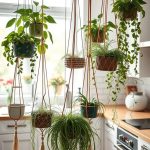If you’re looking to keep your garden thriving with minimal effort, check out these 23 garden irrigation ideas! From DIY systems to smart technology, there’s something here for every garden enthusiast to try out, no matter the size or style of your outdoor space.
Rain Barrels for Sustainable Water Collection

Rain barrels are a fantastic way to collect and store rainwater from your roof. They help conserve water and reduce runoff, making your garden more sustainable. In the image, you see a neatly placed rain barrel receiving water from the downspout. The vibrant flowers nearby add a touch of beauty to this practical setup.
The barrel is designed for durability, often made from materials that withstand the elements. This one shows a classic design, which fits well into any garden. Having a rain barrel not only saves money on water bills but also provides a natural source of water for your plants, especially during dry spells.
To get started with your own rain barrel, simply place it under a downspout, ensuring it’s securely positioned. Remember to cover the top to keep debris and pests out. With a little maintenance, your rain barrel can be a reliable water source for years to come.
Bubblers for Targeted Watering of Trees
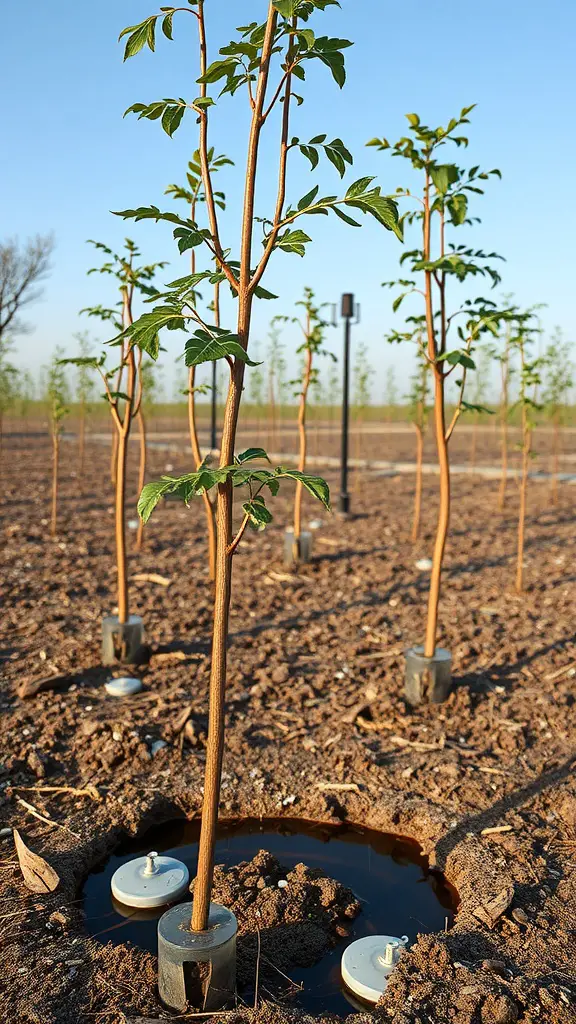
Bubblers are a fantastic way to ensure your trees receive just the right amount of water. These devices deliver water directly to the base of the tree, promoting strong root growth. In the image, you can see young trees surrounded by bubblers. The water collects in small basins, allowing it to soak into the ground efficiently.
This method is especially beneficial for young trees, as their root systems are still developing. Bubblers help avoid overwatering, which can lead to root rot. Instead, they provide a gentle flow of water that seeps into the soil.
Installing bubblers is pretty straightforward. You place them around the base of the tree, ensuring they’re positioned where the roots will benefit most. As the tree grows, you can adjust their placement or add more bubblers as needed.
Using bubblers not only conserves water but also reduces evaporation. This targeted approach means the water goes exactly where it’s needed. When planning your garden irrigation, consider incorporating bubblers for a low-maintenance yet effective solution!
Homemade Sprinkler System Using PVC Pipes
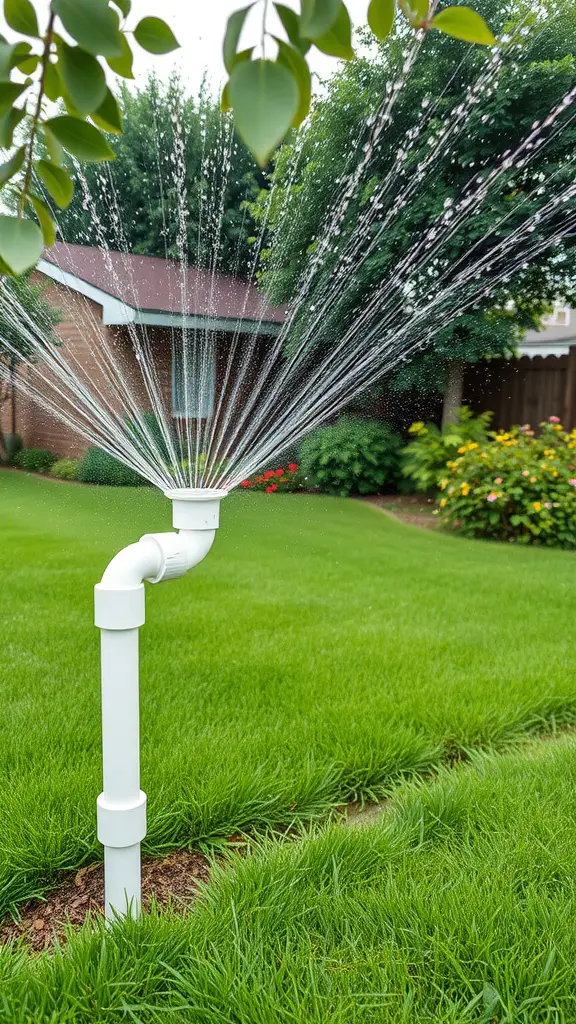
Creating a homemade sprinkler system with PVC pipes can be a fun and practical project for your garden. The image shows a simple setup with a vertically positioned PVC pipe, spraying water in multiple directions. This design is efficient in watering your lawn and plants without much hassle.
Using PVC pipes, you can customize the height and angle of the sprinkler to suit your garden’s layout. The flexibility of PVC allows you to easily connect different pipe sections and fittings to create the perfect watering solution for your needs.
To build your own system, start by gathering your materials: PVC pipes, connectors, and a water source. Cut the pipes to your desired lengths and assemble them securely. You can add holes to the pipes in a pattern that best waters your plants, distributing water evenly across your garden.
Once installed, you’ll enjoy a lush green lawn without the need to hand-water every day. This DIY project not only saves time but also ensures your plants get the hydration they need, keeping your garden thriving all season long.
Soaker Hoses for Deep Root Watering
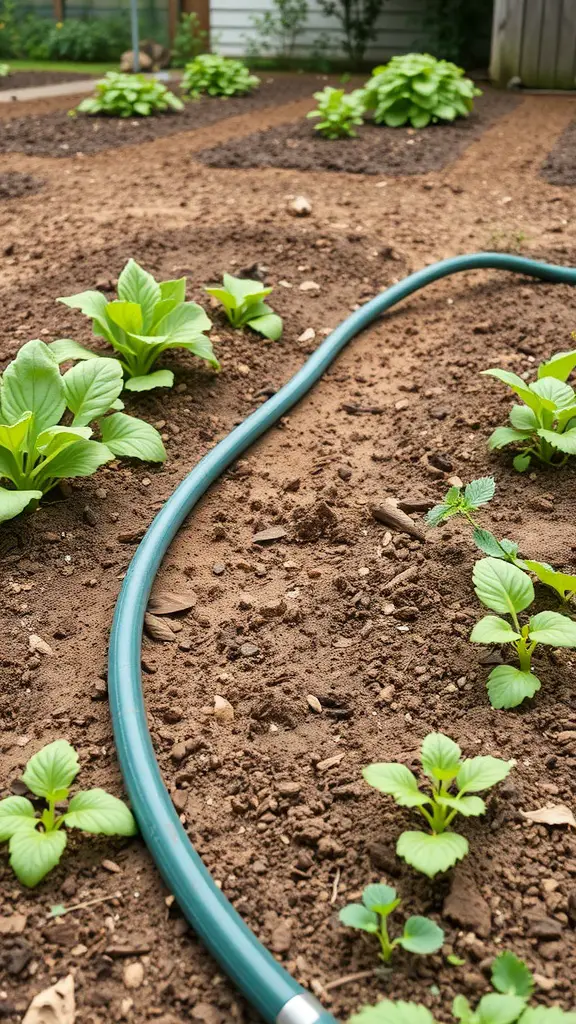
Soaker hoses are a fantastic choice for keeping your garden hydrated. They provide a gentle, even watering right at the roots, which is perfect for nurturing plant growth.
The image shows a soaker hose laid out in a garden bed. You can see small green plants growing around the hose. This setup helps ensure that the water seeps into the soil and reaches the roots, where it’s needed most.
Using soaker hoses is simple. Just lay them out in your garden, cover them with mulch, and let them do their job. They save water by delivering moisture directly to the plants, reducing evaporation.
If you have a variety of plants, you’ll notice how well they thrive with this method. Deep root watering supports healthy growth and can lead to better yields in your vegetable garden.
Subsurface Irrigation for Minimizing Evaporation
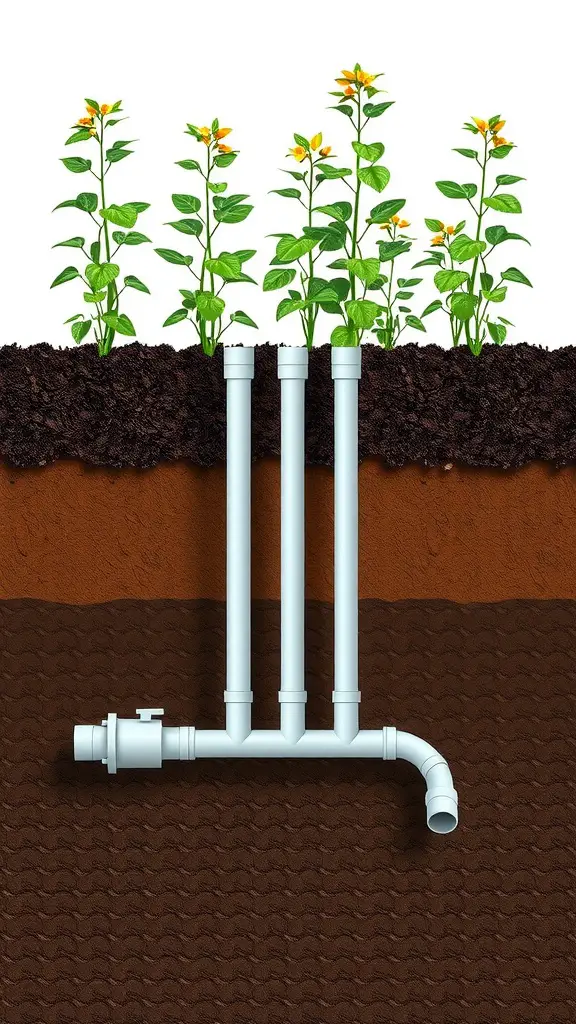
Picture this: a garden where plants thrive while using less water. That’s the magic of subsurface irrigation! In the image, you can see a neat system of pipes buried under the soil, delivering water directly to the roots of the plants. This setup is efficient and minimizes evaporation, ensuring that your garden remains lush.
With subsurface irrigation, water seeps into the soil without losing much to the air. This means you can keep your plants hydrated while conserving water. It’s perfect for hot climates where evaporation rates can be high. The plants depicted here are likely taking full advantage of that moisture right at their roots.
Using this method, you not only promote healthy growth but also save on your water bill. It’s a win-win for both your garden and the environment. So, if you’re looking to create a sustainable garden, consider installing a subsurface irrigation system!
Misting Systems for Humidifying Garden Areas
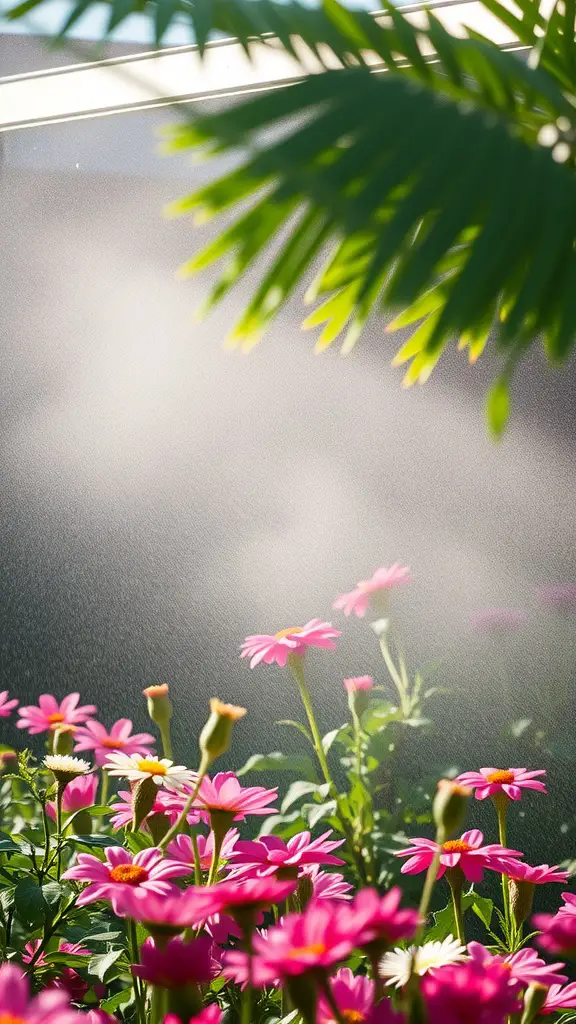
Misting systems are a great addition to any garden, especially for humidifying areas that need a little extra care. The image shows vibrant pink flowers surrounded by a gentle mist, highlighting how effective these systems can be in promoting plant health.
This type of irrigation not only cools the air but also helps maintain moisture levels in the soil. The lush greenery and delicate blooms in the photo showcase the benefits of a well-hydrated garden.
Setting up a misting system can be simple. You can install tubing with nozzles that spray fine droplets of water over your plants. This method is especially useful during hot summer days when plants may struggle to stay hydrated.
Incorporating misting into your garden plan can also help create a more comfortable environment for both plants and people. It’s an effective way to enhance your outdoor space and keep everything looking fresh and lively.
Automatic Sprinkler Timers for Hassle-Free Watering
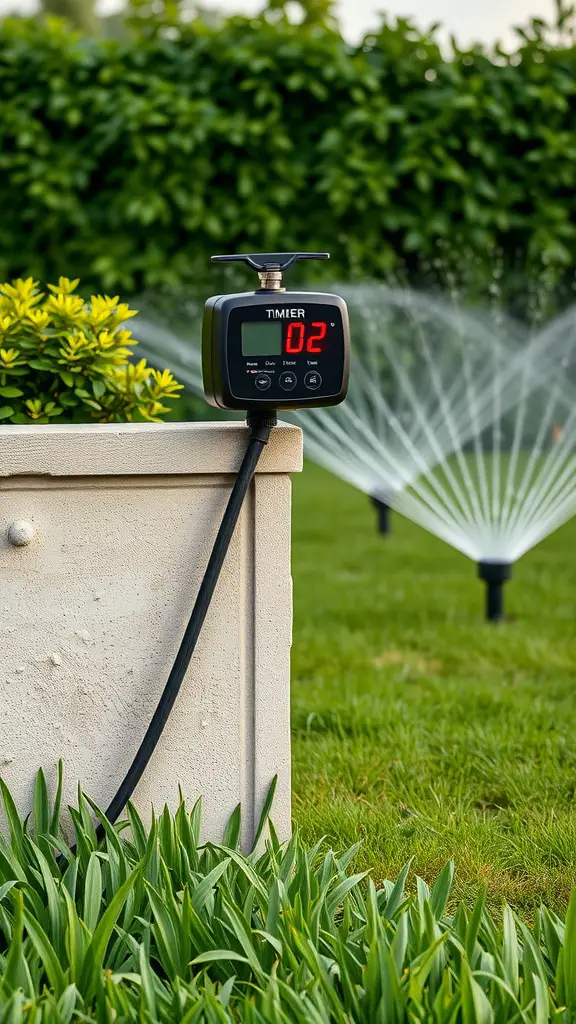
Imagine never having to worry about watering your garden again. With automatic sprinkler timers, that dream can become a reality. These handy gadgets take the guesswork out of watering. Set them up, and they’ll do the job for you while you relax.
The image shows a sleek sprinkler timer mounted on a garden wall, with a clear display. It’s connected to a hose, ready to bring life to your garden. You can see the sprinkler heads in the background, eagerly waiting to distribute water evenly across your plants. This setup ensures every inch of your garden gets the care it deserves.
Using a timer allows you to schedule watering based on your garden’s needs. Whether it’s a hot summer day or a rainy season, you can adjust the settings to keep your plants healthy. Think of it as your garden’s personal assistant, working around the clock to keep everything thriving.
Overall, automatic sprinkler timers make it easy to maintain a beautiful garden without the hassle of manual watering. So, why not give your plants the attention they need while you enjoy your free time?
Drip Irrigation Systems for Efficient Water Use
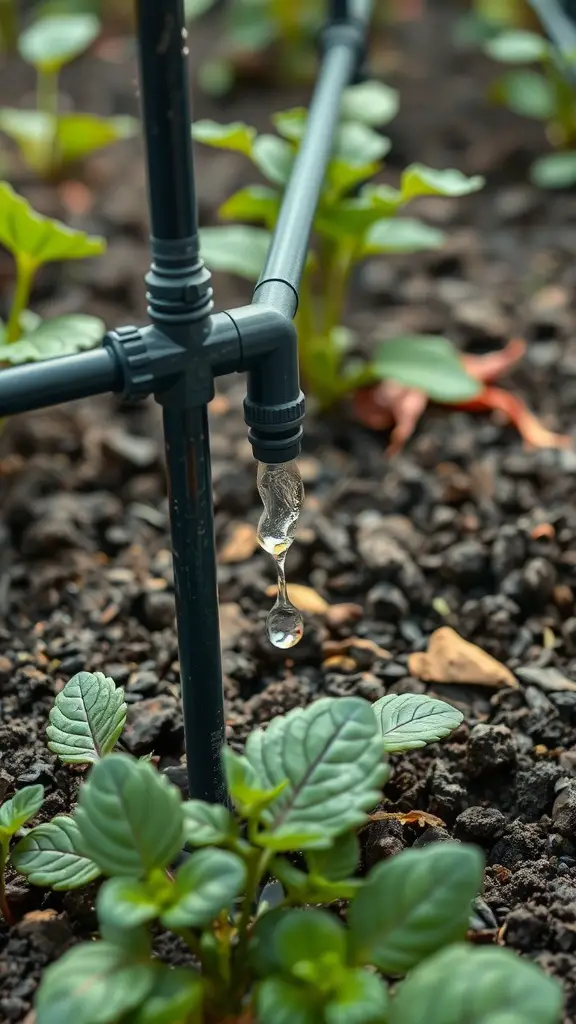
Drip irrigation is a smart way to keep your garden thriving while saving water. This system delivers water directly to the roots of plants, which minimizes waste and ensures that every drop counts.
The image shows a close-up of a drip irrigation setup, with water slowly dripping from a tube onto the soil. This precise method allows plants to absorb moisture effectively. You can see the green leaves of plants nearby, thriving because they get just the right amount of water.
Using drip irrigation can reduce water usage by up to 50%. It’s ideal for various plants, whether you’re growing vegetables, flowers, or shrubs. Setting it up might seem tricky, but once it’s in place, it runs smoothly with minimal maintenance.
Plus, with so many drip irrigation kits available, you can easily find one that fits your garden’s needs. This method not only saves water but also helps to keep your plants healthy and vibrant. So, if you want a garden that thrives with less effort and more efficiency, drip irrigation is a great option!
Gravity-Fed Irrigation Systems for Sloped Gardens
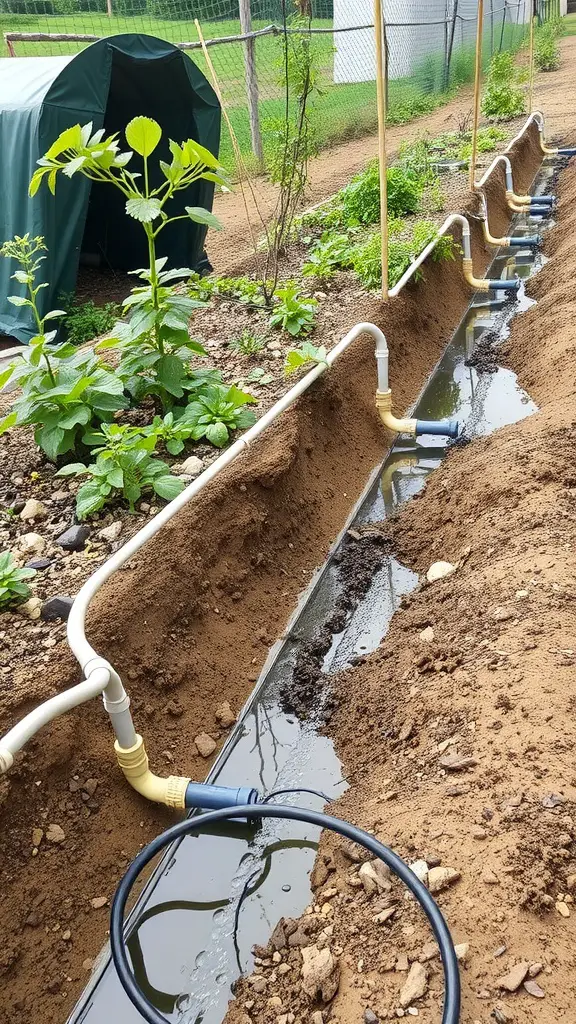
Gravity-fed irrigation systems are a fantastic choice for sloped gardens. These systems use the natural downward flow of water, making them efficient and eco-friendly. In the image, you can see a well-designed setup, with pipes directing water through trenches. This method helps deliver water directly to the roots of plants, ensuring they get the moisture they need.
The layout shown in the image is practical. It uses PVC pipes to channel water from a higher point down to the planting areas. This simple design minimizes the need for pumps, reducing energy costs. Plus, it’s pretty easy to maintain!
Another great aspect of gravity-fed systems is their versatility. You can adapt the setup to fit your garden’s layout. Whether you have rows of vegetables or flower beds, this approach can be customized. Just make sure your water source is elevated enough to create that essential flow.
Watering Cans and Their Role in Smaller Gardens
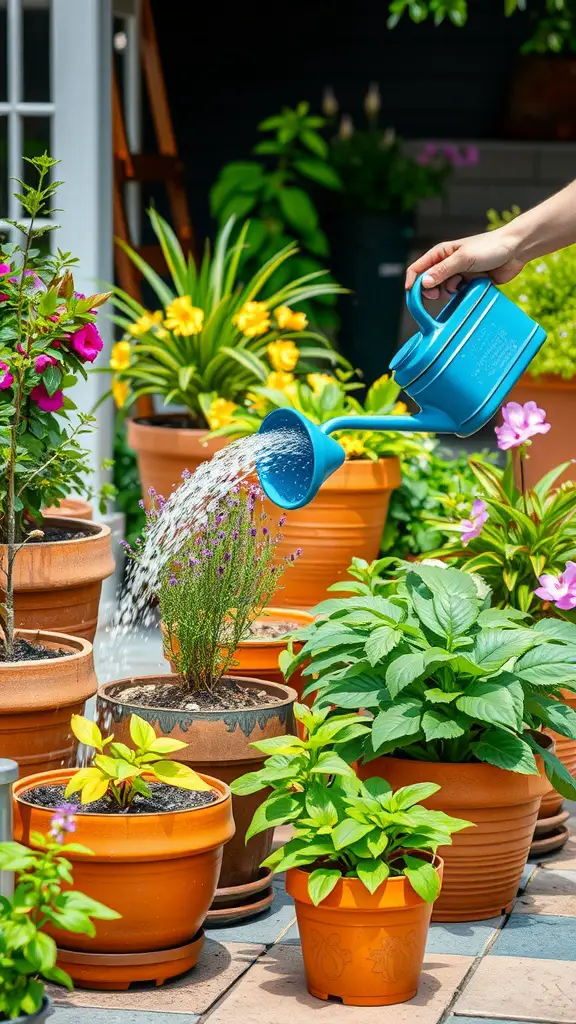
Watering cans are essential tools for tending to smaller gardens. They provide a simple yet effective way to give your plants the hydration they need. In the image, a colorful blue watering can is pouring water over a blooming lavender plant, showcasing how easy it is to nourish greenery with this handy device.
In compact gardening spaces, precision is key. Using a watering can allows you to target specific plants without over-saturating the soil. The gentle flow of water helps prevent soil erosion and keeps your garden healthy.
Plus, watering cans are portable and easy to handle. You can carry them around as you move from one pot to another. This makes them perfect for urban gardens or balcony setups where space is limited. With the right watering can, your plants will thrive and your gardening experience will be enjoyable.
Using Greywater for Garden Irrigation
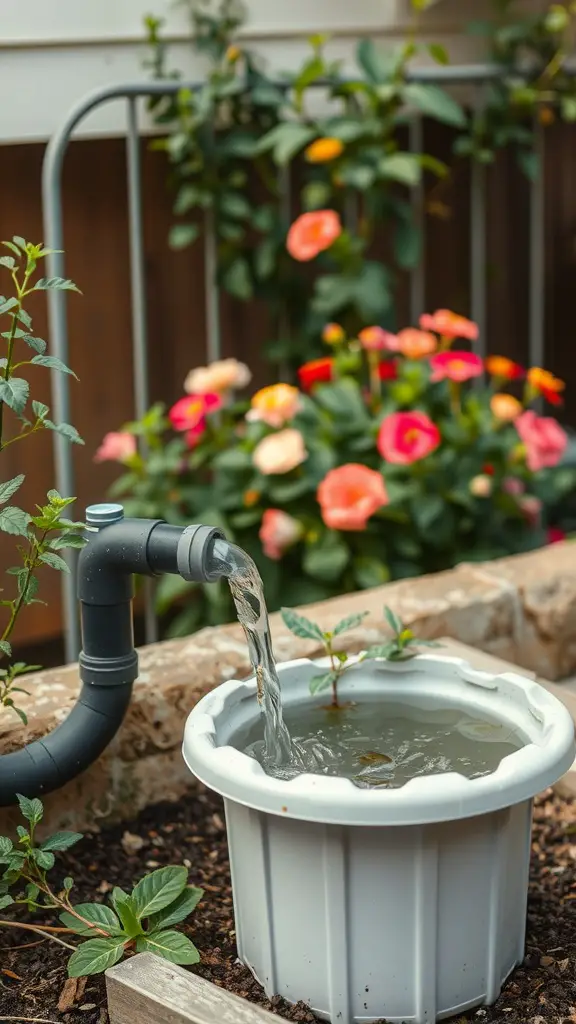
Using greywater for garden irrigation is a practical and eco-friendly solution. The image shows a setup where water flows from a pipe into a container, demonstrating how to effectively utilize greywater in your garden. This method helps conserve water and reduces waste.
Greywater, which comes from sources like sinks and showers, can be a rich resource for your plants. It’s important to filter this water to remove any large particles that might harm your plants. The container in the image is designed to catch and distribute this water easily.
When you use greywater, ensure that the soaps and detergents you use are biodegradable and safe for plants. This way, you keep your garden healthy while saving on your water bill. Plus, it’s a great way to contribute to sustainable gardening practices!
Overhead Sprinklers for Large Areas
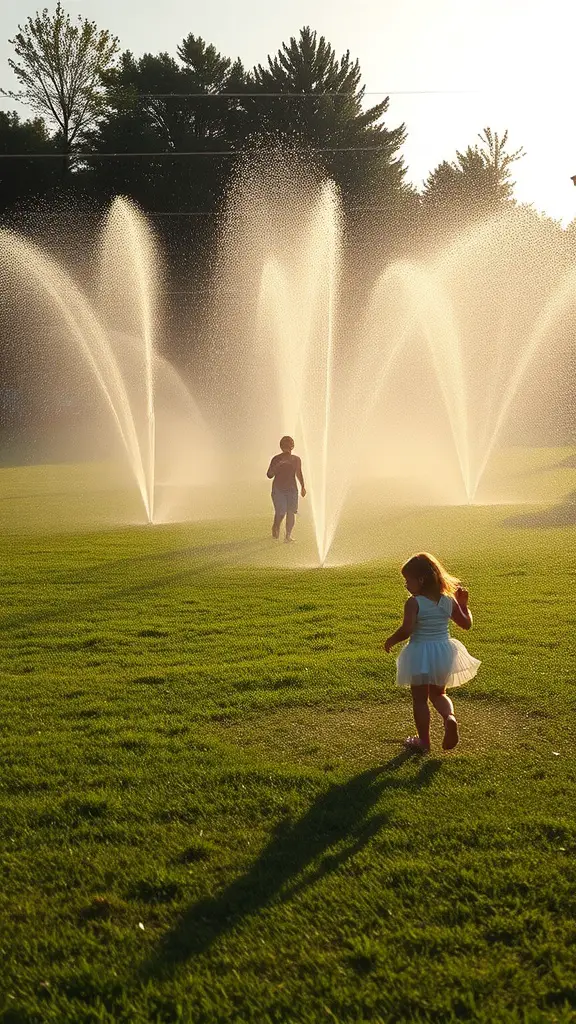
Overhead sprinklers are a fantastic way to water large garden spaces efficiently. In the image, we see kids playing under the spray of sprinklers, which creates a refreshing scene on a warm day. This not only illustrates the playful aspect of garden irrigation but also highlights the coverage that overhead sprinklers can provide.
These systems can cover extensive areas, ensuring even distribution of water. Unlike other methods, they can reach far and wide, making them perfect for lawns, parks, or larger garden areas. You can adjust the spray pattern and timing to suit your specific needs, helping to conserve water while keeping everything green and vibrant.
When setting up overhead sprinklers, it’s essential to consider the size of your garden and the type of plants you have. Some plants might require more water than others, so a bit of planning goes a long way. Overall, overhead sprinklers are not just practical; they also add a fun element to gardening!
In-Ground Irrigation for a Seamless Look
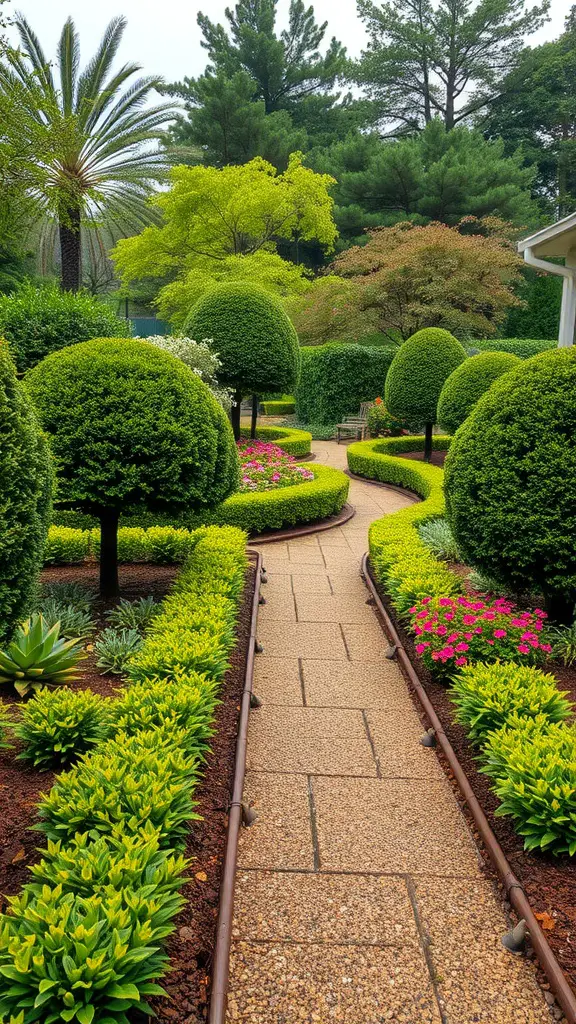
When it comes to garden design, a seamless look can be achieved with in-ground irrigation systems. These systems are hidden beneath the soil, keeping your garden tidy and visually appealing. The lush green plants and neatly manicured paths in the image show how effective this setup can be.
With in-ground irrigation, you can easily ensure that your plants receive consistent moisture without the clutter of visible hoses. This not only enhances your garden’s beauty but also allows you to focus on enjoying your outdoor space. The well-maintained plants in the image are a testament to the benefits of such systems.
Plus, these systems can be automated, saving you time and effort. Imagine spending less time watering and more time relaxing among your beautiful blooms. In-ground irrigation can truly transform your gardening experience!
Smart Irrigation Technology for Precision Watering
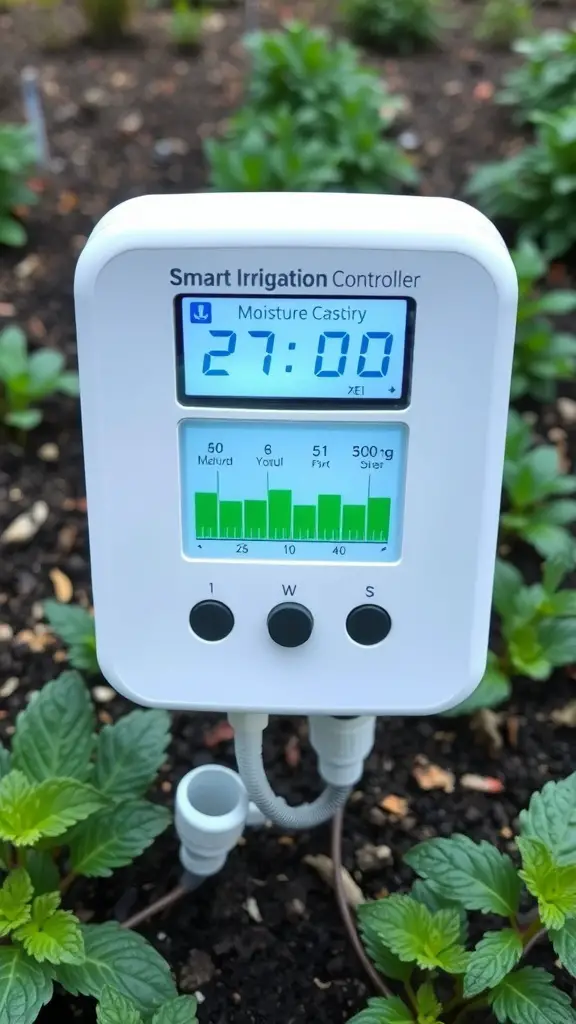
Smart irrigation controllers are changing the way we water our gardens. The device in the image showcases a modern irrigation controller that measures moisture levels in the soil. This technology helps ensure plants receive the right amount of water, preventing over or under-watering.
With a clear display, you can easily see the moisture levels and adjust settings as needed. By using such a device, gardeners can make watering decisions based on actual soil data rather than guesswork. This not only helps keep plants healthy but also conserves water and reduces waste.
Incorporating smart irrigation technology into your garden means less manual work for you. It’s a practical solution for both seasoned gardeners and beginners. With tools like this, you can enjoy a lush garden with minimal effort!
Drip Tape for Rows of Vegetables
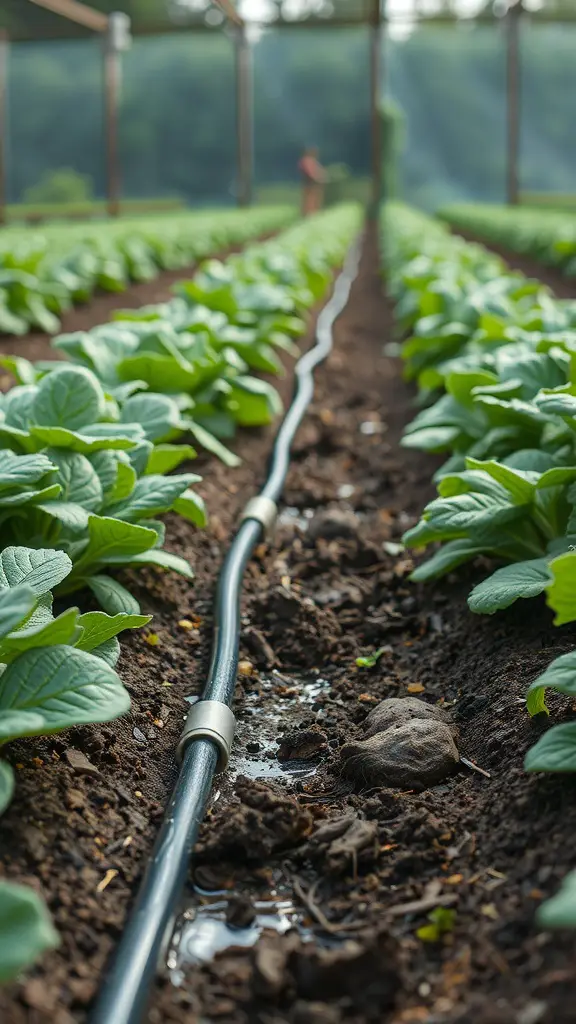
Using drip tape in your vegetable garden is a fantastic way to ensure your plants get the right amount of water. This method delivers moisture right to the roots, keeping the plants healthy and happy. In the image, you can see rows of leafy greens with a black drip tape running along the soil. This tape is designed to slowly release water, which is perfect for growing vegetables.
Drip tape is a simple and efficient irrigation solution. It minimizes water waste and helps prevent fungal diseases by keeping water off the leaves. You’ll notice in the image that the soil is moist, which is exactly what your veggies need to thrive. A gentle watering through drip tape encourages deep root growth, leading to stronger plants.
Setting up drip tape is easy. Just lay it out in your garden beds, ensuring it runs alongside your plants. You’ll want to space it properly to cover all your vegetables. This technique is especially useful for rows of crops, where efficient watering is key. With just a bit of planning, you’ll create a thriving garden!



